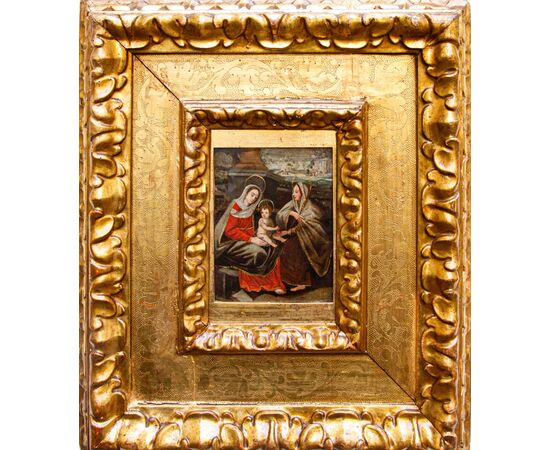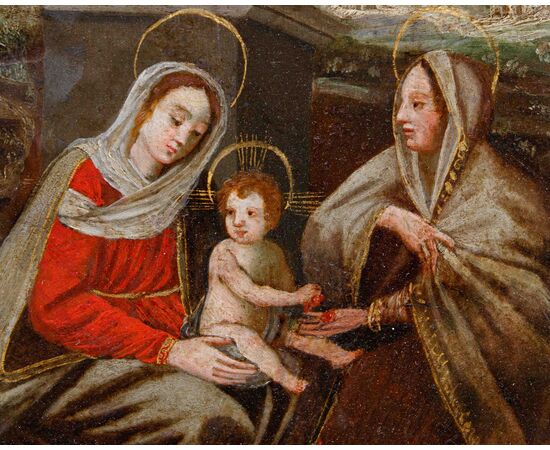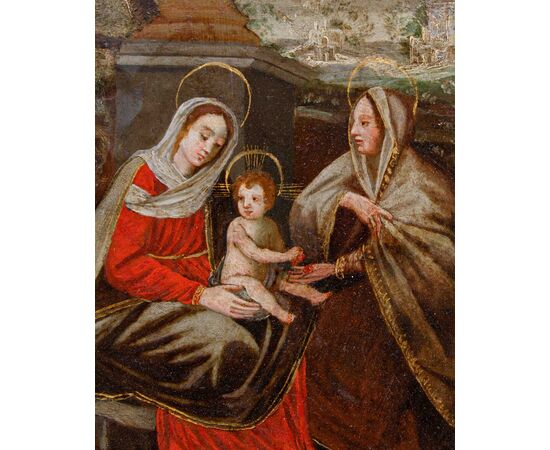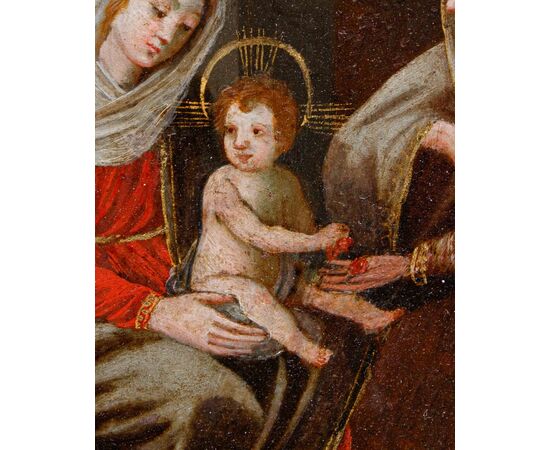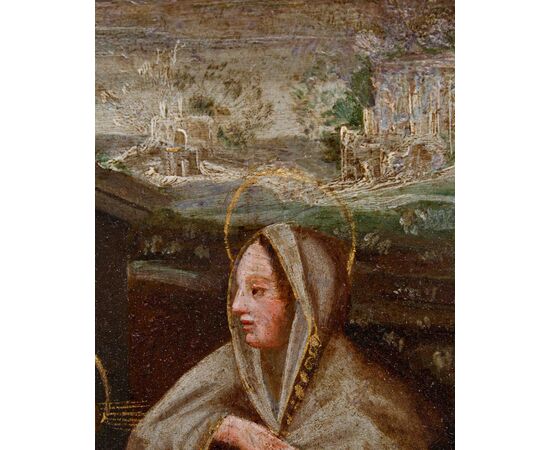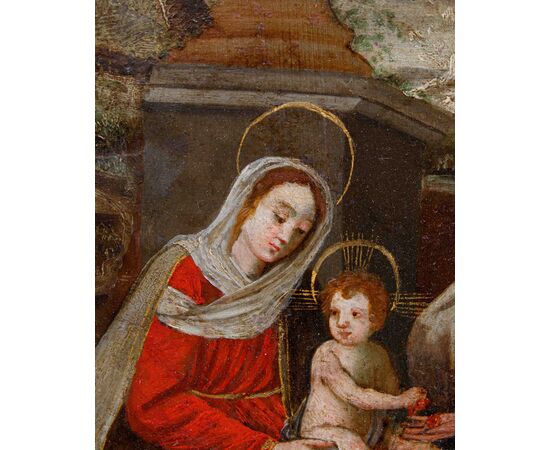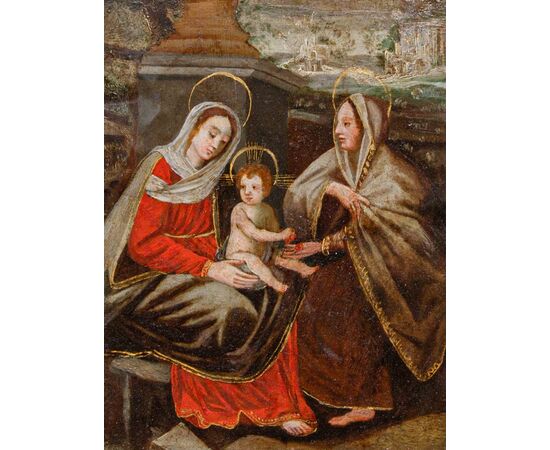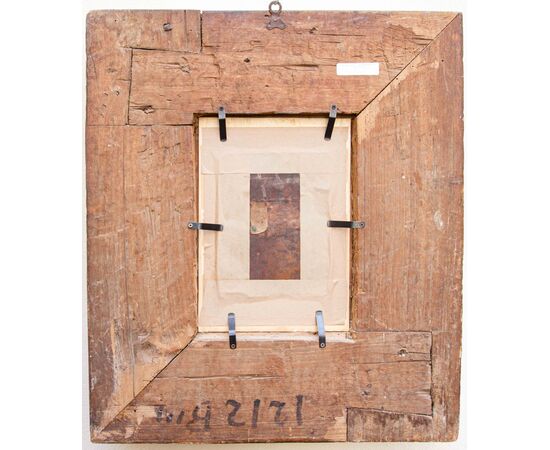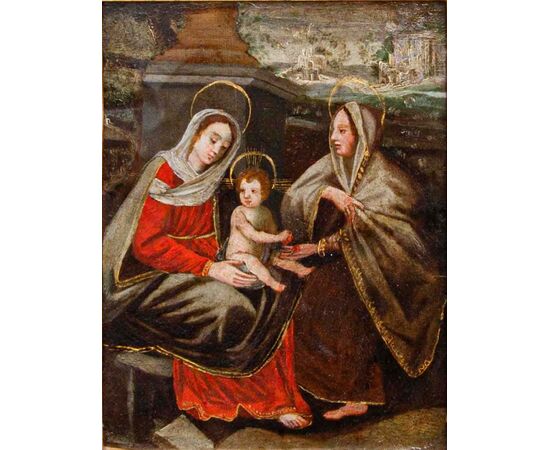Flemish School, 16th century, Saint Anne, the Virgin and Child
Flemish School, 16th century
Saint Anne, the Virgin and Child
Oil on copper, 21 x 16 cm
With period frame, 65 x 56 cm
The painting depicts three central figures: the Madonna, the Child Jesus, and Saint Anne, arranged in a setting that suggests an interior or a contained environment. The overall style, the attention to detail in the faces and hands, and the composition of the figures are consistent with the characteristics of Flemish painting of the 16th century. The Madonna is placed on the left of the composition, seated, and wearing a red dress with drapery covering her head and shoulders. A golden halo surrounds her head. Her gaze is directed downwards, with an expression of serene contemplation or tenderness. She holds or delicately supports the Child Jesus in her lap. The Child reaches out to the right, with one hand taking some fruit offered by Saint Anne. Saint Anne is to the right of the Madonna, also seated. She wears a dark dress and a light veil covers her head: her gaze is directed towards the two central figures. In the upper right part, a stylized landscape with buildings and hills can be glimpsed, representing a distant city, typical of Flemish painting of the period, which loved to include landscape details even in sacred scenes. The scene is enriched and embellished by the frame that encloses the copper, thanks to the gilding and the double profile with vegetal motifs which, together with the central band and the passe-partout, create a depth capable of focusing the viewer's gaze in the space, preciously contoured, of the work. The type of frame is the "cassetta" (box frame), which spread from the end of the 15th century and throughout the 16th century, succeeding and coexisting with the already existing aedicule frames, of which it takes up the form but in a more linear way and without the presence of architectural elements. The fortune enjoyed by this type of frame was such that it was able to overcome centuries and eras: thanks to its elegance and practicality, this model was chosen by artists and collectors even after the aforementioned period, also guaranteeing a certain variety from the ornamental point of view and developing differently in the various areas of Europe and Italy. The one we are facing belongs to the Emilian production of the second half of the 16th century, therefore contemporary to the work it frames, as can be deduced from the burin work of the flat band according to a floral motif, which is linked to those with acanthus leaves superimposed and facing towards the interior of the external profile and the rebate. On the external side of the profile, the depth of the frame is noticeable, also decorated in this section through a lancet-leafed beading.

